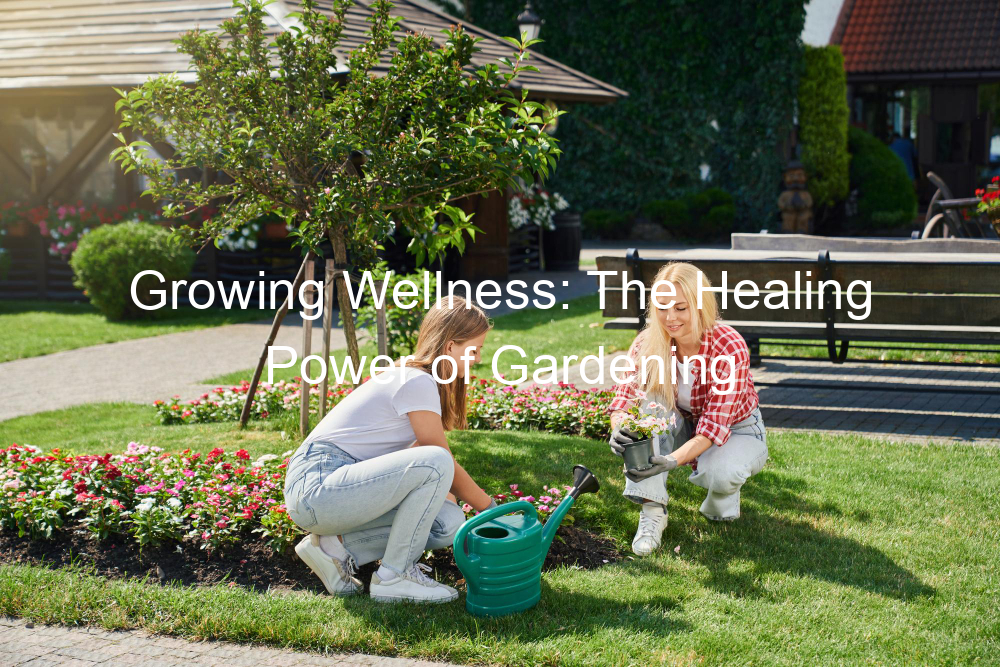Introduction to Exotic Plants in the Tropics
Welcome to our exploration of the fascinating world of exotic plants in the tropics. Moreover, we will dig into what makes these plants unique, the climate they thrive in, and their significance in the tropical ecosystem.
-
- Definition of Exotic Plants
It is also known as alien or non-native plants, are species that are found outside their natural habitats. These plants are often introduced to new environments by humans, either intentionally for horticultural purposes or accidentally. In the context of the tropics, exotic plants are those that are not native to tropical regions but have adapted to the climate and conditions.
-
- Overview of Tropical Climate
This is characterized by high temperatures and heavy rainfall throughout the year. This climate is typically found near the equator, with average temperatures of 25-30 degrees Celsius (77-86 degrees Fahrenheit). The high heat and humidity levels in the tropics create an ideal environment for a wide variety of plant species, including many exotic plants.
-
- Importance of Exotic Flora in the Tropics
Exotic plants play a significant role in the tropical ecosystem. They contribute to biodiversity, providing a variety of habitats and food sources for wildlife. Additionally, many exotic plants have unique properties that can be beneficial for humans, such as medicinal uses. Yet, it’s vital to note that some exotic plants can also become invasive, outcompeting native species and disrupting ecosystems. Therefore, the introduction of exotic plants to new environments should be done with care.
In the following sections, we will take a closer look at some specific examples of exotic plants thriving in the tropics, provide a comprehensive guide to tropical gardening, and explore case studies in tropical horticulture. Stay tuned to discover the beauty and importance of exotic plants in the tropics.
Thriving Tropical Plants: A Closer Look
Let’s delve into the fascinating world of tropical plants. These plants, known for their vibrant colors and unique shapes, have adapted to thrive in warm, humid climates. They are a testament to nature’s diversity and creativity.
Characteristics of Thriving Tropical Plants
Tropical plants have distinct characteristics that set them apart from other flora. These characteristics are not only fascinating but also crucial for their survival in the tropics. Let’s take a closer look at these traits:
-
- Adaptation to Warm Climate
Tropical plants have evolved to thrive in warm climates. They have broad, flat leaves that allow them to absorb as much sunlight as possible. Their leaves also have a waxy coating that helps to retain moisture, preventing them from drying out in the intense heat.
-
- Diversity in Species
The tropics are home to an astonishing variety of plant species. In fact, the tropical rainforests alone house around two-thirds of the world’s plant species. This diversity is a result of the warm, humid conditions that are ideal for plant growth.
-
- Unique Growth Patterns
Tropical plants exhibit unique growth patterns. Some grow extremely tall to reach the sunlight, while others remain small but spread out their leaves to maximize light absorption. Some plants, known as epiphytes, even grow on other plants to reach the light!
To sum up, tropical plants are a fascinating study in adaptation and survival. Their ability to thrive in warm climates, their diversity in species, and their unique growth patterns make them an integral part of our planet’s biodiversity.
Examples of Exotic Plant Species
Let’s take a closer look at some of the most fascinating and beautiful examples of exotic plant species that thrive in tropical environments. These plants not only add to the visual appeal of the tropics but also play a crucial role in maintaining the biodiversity of these regions.
-
- Orchids
Orchids are one of the largest families of flowering plants, with over 25,000 known species. They are known for their stunning flowers, which come in a variety of shapes, sizes, and colors. Orchids have a unique adaptation that allows them to grow in a variety of environments, from the ground to the branches of trees. This versatility is a testament to their resilience and adaptability.
-
- Bromeliads
Bromeliads are a diverse group of plants that includes species like pineapples and Spanish moss. They are known for their striking foliage and vibrant flowers. Bromeliads have a unique feature called a ‘tank’, which is a central reservoir that collects water and nutrients. This adaptation allows them to thrive in a variety of conditions, from rainforests to deserts.
-
- Heliconias
Heliconias, also known as lobster-claws, are known for their bright, colorful flowers that resemble the shape of a lobster’s claw. These plants are important for the ecosystem as they provide food and shelter for a variety of birds and insects. Heliconias prefer a warm, humid climate and are commonly found in the rainforests of the tropics.
These are just a few examples of the exotic plant species that can be found in the tropics. Each of these plants has unique characteristics and adaptations that allow them to thrive in their specific environment. Understanding these plants and their needs can help us appreciate the complexity and beauty of the tropical ecosystem.
Gardening in the Tropics: A Comprehensive Guide
Whether you’re a seasoned gardener or a beginner, gardening in the tropics can be a unique and rewarding experience. With the right knowledge and techniques, you can cultivate a vibrant tropical garden that thrives all year round.
Warm Climate Gardening: Tips and Techniques
Warm climate gardening requires a different approach compared to temperate climates. Here are some tips and techniques that can help you succeed.
- Understanding the SoilTropical soil is often rich in nutrients but can be challenging to work with due to its heavy clay content. It’s essential to understand the type of soil in your garden and amend it as necessary. For instance, adding organic matter can improve soil structure and nutrient content.
- Choosing the Right PlantsNot all plants can thrive in a tropical climate. When choosing plants for your garden, consider their sunlight, water, and temperature requirements. Some plants that thrive in tropical climates include hibiscus, orchids, and palms.
- Watering and FertilizingWatering and fertilizing are crucial aspects of tropical gardening. Tropical plants generally need more water and nutrients than plants in cooler climates. However, be careful not to overwater or over-fertilize as this can harm the plants. It’s best to water and fertilize in the early morning or late evening when the sun is less intense.
By understanding the unique challenges and benefits of tropical gardening, you can create a lush, vibrant garden that’s a joy to behold. Bear in mind, the key to successful gardening is patience and continual learning. Happy gardening!
Tropical Plant Care: Ensuring Healthy Growth
When it comes to tropical plant care, there are three main areas to focus on: dealing with pests, pruning and repotting, and providing adequate sunlight. Let’s explore each of these in detail.
-
- Dealing with Pests
Pests can be a real nuisance for tropical plants. They can cause damage, hinder growth, and even kill your plants if not dealt with properly. Some common pests include aphids, spider mites, and whiteflies. To deal with pests, it’s important to regularly inspect your plants for any signs of infestation. If you spot pests, you can use natural remedies like neem oil or insecticidal soap to get rid of them.
-
- Pruning and Repotting
Pruning is a crucial part of tropical plant care. It helps to maintain the shape of the plant, encourages new growth, and removes dead or diseased parts. When pruning, always use sharp, clean tools to avoid causing damage or spreading disease. Repotting, on the other hand, is necessary when your plant outgrows its pot. Always choose a pot that’s one size larger than the current one and use a good quality potting mix.
-
- Providing Adequate Sunlight
Tropical plants love sunlight. However, the amount of sunlight they need can vary depending on the species. Some plants thrive in direct sunlight, while others prefer indirect light. It’s vital to research your specific plant’s needs and provide the appropriate amount of light. If your plant isn’t getting enough light, it may show signs like slow growth, yellowing leaves, or leggy growth.
To sum up, tropical plant care involves a balance of dealing with pests, pruning and repotting, and providing adequate sunlight. By paying attention to these areas, you can ensure the healthy growth of your tropical plants.
Tropical Horticulture: Case Studies
In our exploration of tropical horticulture, we’ve come across several successful exotic plant gardens. Let’s take a closer look at three of them.
Successful Exotic Plant Gardens
-
- Case Study 1: The Botanical Garden of Singapore
The Botanical Garden of Singapore is a shining example of tropical horticulture done right. This garden is home to over 10,000 species of plants, many of which are exotic and thrive in the tropical climate. The garden’s success lies in its meticulous planning and maintenance, with each plant carefully selected for its ability to thrive in the local climate and soil conditions.
-
- Case Study 2: The Tropical Rainforest Conservatory, Florida
The Tropical Rainforest Conservatory in Florida has successfully cultivated a variety of exotic plants, including the rare and beautiful Orchidaceae family. By creating a controlled environment that mimics the plants’ natural habitat, the conservatory has been able to nurture these exotic species successfully. The conservatory’s success highlights the importance of understanding and replicating the natural conditions of exotic plants for successful cultivation.
-
- Case Study 3: The Exotic Plant Collection at Kew Gardens, London
Despite being located in a temperate climate, Kew Gardens in London houses one of the most extensive collections of tropical plants in the world. The garden’s success is attributed to its innovative use of greenhouses, which create a tropical climate within a temperate zone. This case study demonstrates that with the right resources and knowledge, tropical horticulture can be successful even in non-tropical climates.
These case studies provide valuable insights into the practices and strategies that can lead to successful tropical horticulture. They highlight the importance of understanding the specific needs of exotic plants, creating suitable environments for their growth, and maintaining them with care and precision.
Challenges and Solutions in Tropical Horticulture
Tropical horticulture is a fascinating and rewarding field, but it’s not without its challenges. Let’s explore three common issues and how we can overcome them.
-
- Challenge 1: High Humidity and Diseases
In the tropics, high humidity can lead to the growth of harmful fungi and bacteria on plants. These can cause diseases that stunt growth or even kill the plant.
Solution: Regularly monitor your plants for signs of disease. If you notice any, remove the affected parts immediately to prevent the disease from spreading. Using fungicides and bactericides can also help keep your plants healthy.
-
- Challenge 2: Intense Sunlight and Heat
The intense sunlight and heat in the tropics can be too much for some plants. They can get sunburned, which damages their leaves and hinders their growth.
Solution: Provide shade for your plants during the hottest parts of the day. You can use shade cloth or plant larger trees to create a natural sunblock. Also, make sure your plants get plenty of water to help them stay cool.
-
- Challenge 3: Pests
The warm climate of the tropics is perfect for a wide variety of pests. These can damage your plants and reduce your harvest.
Solution: Use natural pest control methods, like introducing beneficial insects that eat the pests. Regularly check your plants for signs of pests and remove them by hand if necessary.
By understanding and addressing these challenges, you can enjoy a successful and rewarding experience in tropical horticulture.
Conclusion: The Beauty and Importance of Exotic Plants in the Tropics
As we journeyed through the lush, vibrant world of tropical horticulture, we discovered the unique beauty and significance of exotic plants in the tropics. These plants not only add to the aesthetic appeal of our surroundings but also play a crucial role in maintaining the ecological balance of our planet.
- Recap of Key Takeaways
We began our exploration with an introduction to exotic plants in the tropics, learning about their unique characteristics and the conditions that allow them to thrive. We then took a closer look at some of these plants, marveling at their diverse shapes, colors, and sizes. Our comprehensive guide to gardening in the tropics provided practical tips and strategies for cultivating these plants, while our case studies highlighted the success stories of tropical horticulture.
Some key insights we gleaned include the importance of understanding the specific needs of each plant, the role of the tropical climate in promoting plant growth, and the potential benefits of tropical horticulture, such as improving air quality, enhancing biodiversity, and providing medicinal resources.
- Future Prospects of Tropical Horticulture
Looking forward, the future of tropical horticulture appears promising. As more people recognize the value of these exotic plants, we can expect to see increased interest in their cultivation. Moreover, advancements in technology and research could lead to new methods of growing these plants, making tropical horticulture more accessible and sustainable.
Nevertheless, it’s crucial that we continue to respect and protect the natural habitats of these plants. By doing so, we can ensure that the beauty and importance of exotic plants in the tropics are preserved for future generations to appreciate and enjoy.
To sum up, the world of tropical horticulture is a fascinating one, filled with beauty, diversity, and potential. As we continue to explore and learn, let’s remember to do so with respect and appreciation for these incredible plants and the vital role they play in our world.





